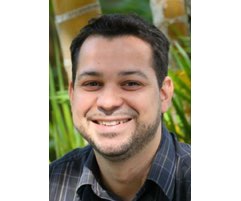In this NICS podcast, Scott Gibson discusses how the Earth was formed with Wladimir Lyra, an assistant professor at California State University at Northridge, Department of Physics and Astronomy. Lyra is using XSEDE supercomputing resources to explore this age-old question.
“We are living in a special time when computers have become powerful enough to solve these equations—not in a full solution to claim the Millenium Prize, but accurately enough to understand the behavior of physical systems. Today, we perform computer simulations of the disk whence the Earth was formed. Finally, for the first time in history, we are building a scientific answer to the age-old question of our origins. In my computer simulations, in addition to hydrodynamics, I include physical processes such as magnetic fields and turbulence, thermodynamics and radiation, dust, and aerodynamics. By doing this, I construct, harnessing the full power of modern computers, a digital laboratory to study the processes taking place during the formation of our planet.”
Wladimir Lyra is also a research associate at NASA’s Jet Propulsion Laboratory and a visitor at Caltech’s Division of Geological and Planetary Sciences. A native of Rio de Janeiro, Brazil, he received his Ph.D. in February 2009 from Uppsala University, Sweden. Lyra is a recipient of the Sagan Fellowship, the prestigious postdoctoral research grant named after the famous astronomer and science communicator Carl Sagan.




